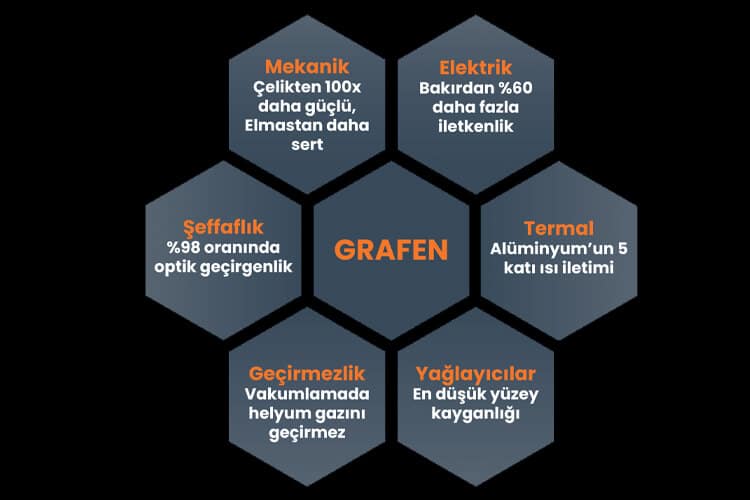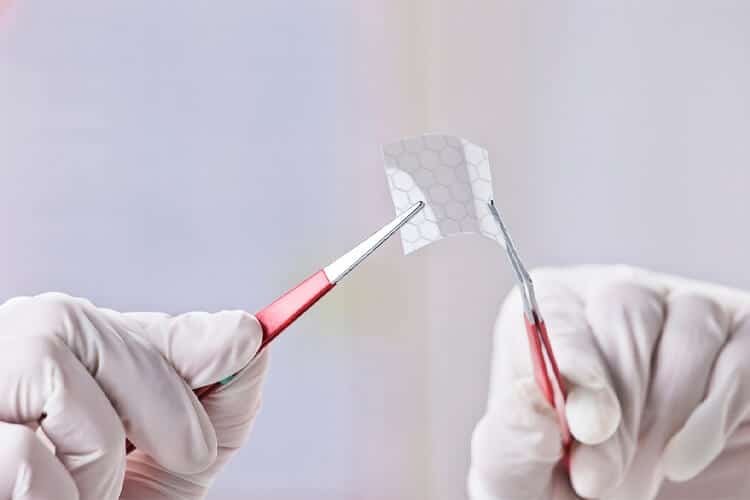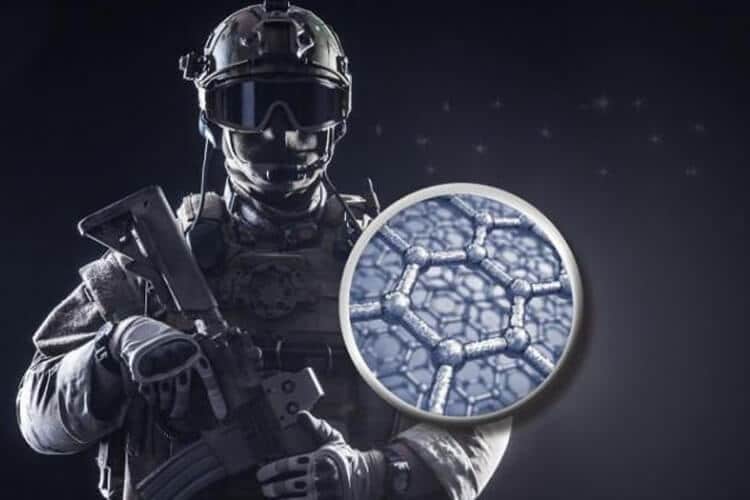
Graphene , the strongest material known in the universe, is highly conductive and also flexible. This form, which is a miracle building block that transmits electricity without resistance, will appear in almost every field in the coming years. What is graphene in this content? Let’s take a closer look at the answer to your question.
What is Graphene?

Graphene, one of the most interesting elements on the periodic table, is the name given to one of the honeycomb-like braided structures of the carbon atom. Besides the well-known allotropes of carbon in daily life such as graphite and diamond, there are also newly synthesized forms such as nanotubes and fullerenes.
In general, the carbon bonds of graphite are weak, while the carbon bonds of diamond are very strong. For example, diamond and graphite are forms of carbon, but they have very different natures. Therefore, while diamond is extremely durable, graphite is extremely brittle. They have the same atoms, but because they exhibit different arrangement properties, they provide different properties to the material.
With this arrangement, diamonds are very strong, while graphite is extremely brittle. To describe this form in the simplest way, it is a super thin layer of graphite. Pencil graphite, which is very well known in daily life, is an example of which our fingers have actually been in our lives since the day we started holding a pencil.
Discovery of Graphene and Nobel Prize in Physics
Synthesis of graphene material, which is a single layer of graphite, was not realized until 2004. In 2004, surprisingly, scientists succeeded in synthesizing two-dimensional graphene crystals. Andre Geim of the University of Manchester, Konstantin Novoselov and their collaborators succeeded in separating the individual graphene layer by repeatedly gluing and removing an ordinary adhesive cellophane onto graphite.
They observed the isolated layer with a simple optical microscope. With this observation, interest and curiosity in graphene increased in the scientific world. Russian-born scientists Geim and Novoselov were nominated for the 2010 Nobel Prize in Physics for their discoveries, and they succeeded in receiving the award. At the age of 36, Konstantin Novoselov became the youngest person to be awarded the Nobel Prize in Physics.
Methods Used to Obtain Graphene:

- Chemical Separation Method
- Silicon-Carbon Method
- Layer Separation Method
- Epitaxial Magnification
Although graphene can be synthesized close to the present day, the electronic properties of graphene began to be investigated until 1946. One of the first studies on this form was made by PR Wallace. However, Wallace did not use the word graphene and used the name ‘single-layer structure’ to examine the energy-band structure of graphene. The completely transparent material can be seen and touched even though it has 2 layers.
So Why Is Graphene So Important?

If we need to explain the importance of graphene without going into chemical formulas, we can say the following. Graphene is only one atom thick and has the distinction of being the first two-dimensional material discovered in the world. But it is one of the strongest materials known in the universe. It is a hundred times stronger than steel.
Despite being so thin, being so strong was enough to attract attention. Ordinary metals cause energy loss and heat generation due to electron scattering. Graphene has high conductivity. That is, our material has the characteristics of high conductivity, flexibility, transparency and impermeability to most liquids and gases.
Graphene Flexible Electronics
In addition to its strong conductivity, graphene, which has a very transparent and flexible structure, also stands out with its use in portable electronic devices. It will be easier to produce much more robust and foldable products using this material in smart mobile phones and tablets. Thanks to its flexibility, artificial arms, legs, etc. By using it in places, designs that can be easily shaped and bent can be made.
Areas of Use of Graphene:
- Graphene will attract great interest in its use as a coating material, especially in solar cells, screens, sensors, batteries and transistors, or as an additive to increase performance and prevent heat loss in various coating technologies.
- It is thought to revolutionize battery technologies as it is a good conductor and robust in holding electricity. It is thought to extend the battery life.
- With the use of graphene materials in hydrogen storage, research and studies are continuing to store hydrogen efficiently and use it in places where electrical energy is required.
- Conductive graphene coatings will also find use in cell phones, tablets, computers, television screens and all other displays.
- Graphene coatings can even be used on ship hulls, pots, pans, mirrors, windows and textiles.
Use in Cancer Treatment

Graphene can detect cancer cells in the early stages of cancer disease. It can stop tumor growth in many types of cancer by providing autophagy, which is the death of cancer cells. It better targets cancer cells when used with graphene-based carriers to deliver chemotherapy drugs to tumors. In the pharmaceutical industry, not only in cancer treatment, but also in anti-inflammatory drugs, graphene carriers have been given and promising developments have been experienced.
Use in Communication
A wearable bio-integrated device has been developed that can translate sign language into text and spoken language. This device took advantage of the high conductivity and flexibility of graphene. Today, clothes that can bend and stretch easily are starting to develop thanks to this material.
Use in Biosensors
A single molecule can be detected by graphene biosensors. Medical sensors made with graphene have been marketed by some medical companies.
Usage on Touch Screens

Since graphene thin films have low resistance and high transparency, they are more useful than other materials in terms of performance. The density of graphene is thousands of times less than that of copper and offers greater mobility than silicon. In this way, the electrons in the graphene do not encounter any resistance. Many phone brands have started to produce foldable phone models.
Use in Plant Protection and Food Safety
It can be used to protect plants by detecting harmful molecules for plants by producing sensors in micro sizes with graphene. In this way, farmers will be able to detect harmful substances and grow the best products.
Use in Military Equipment

There are also studies on the use of graphene in the arms industry. Thanks to its hardness and conductivity, researches and some prototypes have begun to be produced for its use in armored vehicles and articles aimed at protecting the human body. In contrast to metals, graphene material is chosen in the construction of these designs, which are referred to as Ultimate Armor. It is planned to produce these RoboCop armors with this material, which is lighter than steel and 200 times stronger.
Use in Helmets
Graphene has been proven to be one of the strongest substances in the universe. This feature of the substance is used in helmets and bulletproof vests to protect human life. Being light, strong and flexible, it is used in helmets and vests. It is also used in motorcycle helmets.
So Why Is It Still Used In A Limited Number Of Products And In The Market While It Will Be Applied In So Many Areas?

Although the substance in question has such a wide commercial range and wide usage area, the reason why it is not used in all areas in the commercial market is that a cost-effective and practical production for the production of graphene has not been realized yet. Today, graphene can be produced in very low quantities with very high costs.
It is predicted that great strides will certainly be made in the production of this miraculous building block with research and studies. For graphene produced in small quantities, many companies, including Samsung, are exploring ways to produce this material more efficiently and cheaply.
Production in Turkey
It is working on the efficient and cheap production of this material in Turkey. With these researches, especially in the arms industry, graphene usage areas will increase in our lives.









